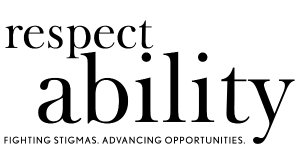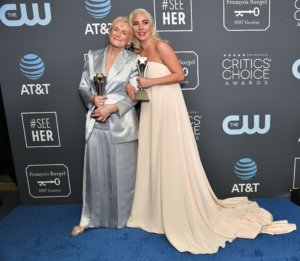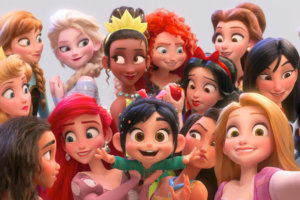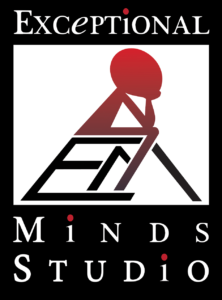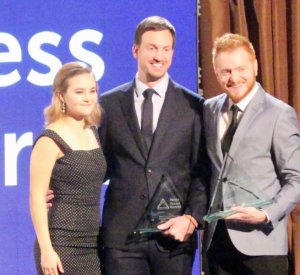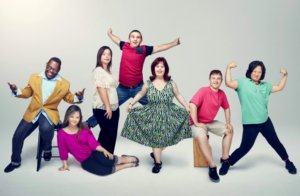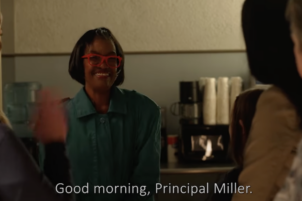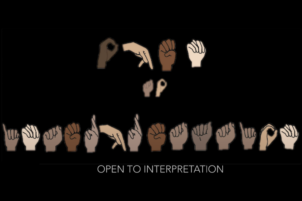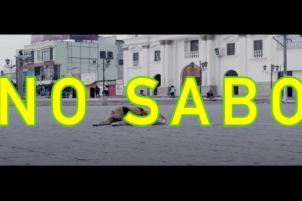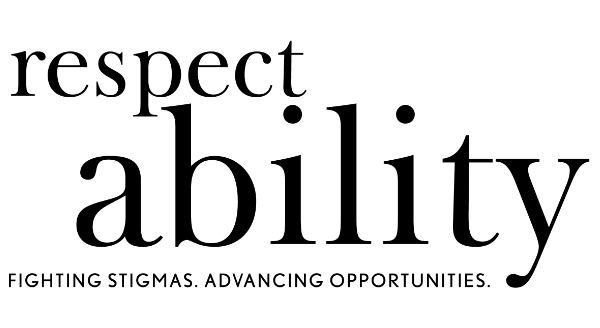Even though disability representation has improved, Hollywood still has work to do for full inclusion – and recognition – of disability.
Los Angeles, California, Feb. 22 – 2019’s Best Picture category is full of diversity, not only about race and ethnicity, but by ability as well. Best Picture nominees Bohemian Rhapsody, A Star is Born and BlacKkKlansman focus on topics of depression, alcoholism and sexually-transmitted disabilities. In addition, Netflix’s Best Documentary Short nominee End Game focuses on three medical providers and their relationships with hospice patients. One of the providers, B.J Miller, M.D., has a physical disability – he lost three limbs in an accident.
Leading the Way
This year’s Leading Actress competition is between two mental health advocates Glenn Close and Lady Gaga. Close (The Wife) was a founder and is the chairperson of BringChange2Mind, a U.S.-based campaign to eradicate the stigma and discrimination surrounding mental illness, supporting her sister Jessie who has bipolar disorder. Gaga (A Star is Born), who also is nominated this year for Best Song (“Shallow”), often has talked about her experiences with anxiety and fibromyalgia. While Close beat Gaga in a shocking upset at the Golden Globes, both Gaga and Close pulled a surprise tie at the Critics’ Choice Awards.
“I want to thank life for all of the experiences I had to draw from for this role,” Gaga said during her acceptance speech. “I would like to dedicate this award tonight to all people who have suffered from alcoholism or addiction or who have watched their loved ones suffer. I wanted nothing more to show the truth and the power of this very heartbreaking dynamic. This is the true star of the film. The true star is not me. It is bravery and perseverance.”
About “Shallow,” Gaga said, “This song is a conversation between men and women asking each other questions about life and a desire for more depth in the shallowness of a modern era.”
The film A Star is Born – and song – touch upon issues of addiction, depression and anxiety.
Moreover, three actors’ nominated performances for Best Leading Actor are for portraying men with mental and physical disabilities. Bradley Cooper’s character Jack in A Star is Born mixes his depression with alcoholism, making his relationship with Ally (Lady Gaga) a struggle. In A Eternity’s Gate, William Dafoe plays legendary artist Vincent van Gogh, who was known for having depression. With a Golden Globe in hand, Rami Malek already has Oscar buzz for his performance as Queen lead singer Freddie Mercury, who balances leading his famous band with his secret battle with AIDs.
Disability Gets Animated
Three out of five Best Animated Film nominees feature characters with physical disabilities. In Mirai (the first anime movie nominated that is not created by Studio Ghibli), the little boy Kun travels back in time to meet his great-grandfather Seinen, who severely injured his leg during World War II. But, Seinen does not let his disability stop him as he rides on his horse and motorcycle with Kun.
Wes Anderson’s Isle of Dogs includes several main and background characters with disabilities. Duke, one of the lead characters, mentions his brother committed suicide after the banishment to Trash Island. One of the main characters is a sage dog named Jupiter, who is blind in one eye. The main human character Atari walks around with a cane throughout the entire movie. Another significant human character Professor Watanabe is blind, but he makes the antidote to heal the dog flu. As a result of dogs being banished to an island that is trashed with no food or water, dogs experience weight loss, dizziness, depression, sleeping disorders and emotional disabilities.
Disney’s Ralph Breaks the Internet, a sequel to Wreck-It Ralph (which also included a main character with PTSD), stars the first Disney Princess with disabilities named Vanellope von Schweetz. She has a physical disability as her body frequently glitches and pixelates. Vanellope, along with co-star Wreck-It Ralph, also have anxiety and her anxiety attacks cause her – and the world around her at one point – to glitch violently.
Vanellope is voiced by comedian-actress Sarah Silverman, who is vocal about having depression. “I wouldn’t wish depression on anyone,” Silverman wrote in a 2015 essay. “But if you ever experience it, or are experiencing it right now, just know that on the other side, the little joys in life will be that much sweeter. The tough times, the days when you’re just a ball on the floor—they’ll pass. You’re playing the long game, and life is totally worth it.”
It is not just the feature films that have characters with disabilities. One of the animated shorts Animal Behaviour takes place at a support group for animals with mental disabilities. Some of the animals include Lorraine the leech who has anxiety, Todd the pig who has an eating disorder and Linda the cat who has obsessive-compulsive disorder. The newest member is Victor, an ape with anger-management issues. During the short, we learn about each animal’s issues and how they are managing them. In addition, One Small Step tells the story of a Chinese-American girl who dreams of being an astronaut. As her father ages, he walks with a cane and later comes to a point where he cannot walk up and down the stairs anymore.
“Including a character with a visible disability in an animated film does not happen by accident,” said Lauren Appelbaum, who leads RespectAbility’s Hollywood Inclusion efforts as the organization’s communications director. “Inclusion of people with disabilities must be an intentional effort. What we see on screen influences how we act in real life. Thus, when filmmakers make the decision to include individuals with visible disabilities, they are helping to remove the stigmas that currently exist about interacting with individuals with disabilities.”
People with Disabilities Make Exceptional Behind-the-Scenes Talent
Three of the nominations for Best Visual Effects are Avengers: Infinity War, Black Panther and Solo: A Star Wars Story. Along with First Man and Green Book, the inclusive studio Exceptional Minds created visual effects and animations for these Oscar-nominated films. Exceptional Minds is both a vocational academy and a professional studio that trains and hires animators and artists who are on the autism spectrum.
“We get asked often how we can create job opportunities in the competitive entertainment industry for a population that has one of the lowest employment rates,” said Dr. Jeffrey Shapiro, the Executive Director for Exceptional Minds. “I think the main reason is that we have raised our expectations. We challenge everyone who walks through these doors to reevaluate their expectations for people with autism, and you know what? They meet, if not exceed, our expectations every time.”
Past Oscar nominations include Doctor Strange, Star Wars: The Last Jedi, War for the Planet of the Apes and Guardians of the Galaxy. Exceptional Minds also won an Emmy for Outstanding Special Visual Effects last year for the Game of Thrones episode Beyond the Wall. Exceptional Minds also animates different scenes of Netflix’s Atypical and ABC’s The Good Doctor, which both focus on characters on the autism spectrum.
“We are looking to change hearts and minds,” Co-Founder and Vice Chairperson Yudi Bennett said of the importance of people with disabilities working both in front of and behind the camera. “We need people in the film industry who are not all the same; diversity is a blessing.”
Steps Forward and Back
Even though the representation of disability in this year’s Academy nominations has improved, both Hollywood and the Academy still have work to do for full inclusion – and recognition – of disability.
The most noticeable movie about disabilities this season, A Quiet Place – a movie that centers around the theme of deafness and features characters who are deaf – merely received a nomination for Best Sound Editing. Millicent Simmonds, the lead actress who is deaf in real life, was shut out from the Best Leading Actress category. To contrast, last year actress Sally Hawkins, who can fully speak and lives with lupus, was nominated – and won – Best Picture for her performance in The Shape of Water as Elise Esposito, who is mute and speaks with American Sign Language. Similarly, Academy Award winner Octavia Spencer also was nominated for her performance as Zelda Fuller, her interpreter.
A Quiet Place won the Critics’ Choice Award for Best Sci-Fi or Horror Movie and the film was honored at the Media Access Awards, a ceremony honoring media and entertainment trailblazers advancing disability awareness and inclusion. Director-actor Krasinski pushed for casting that included a deaf actress playing the character written as deaf. The filmmakers felt that casting Simmonds helped the film become the success it is. “I found myself asking her [Simmonds] all the time, ‘Is this right?’ And she would be like, ‘maybe do it more like this?” She was not intimidated at all.” Krasinski said of Simmonds influence in an interview with The Wrap.
“When I got the original script from Beck and Woods, they had this deaf character in the movie and in my rewrite, I just really wanted to flesh that out even more,” said Krasinski in the interview. “When you get someone like [Millicent Simmonds], not only are you so happy and honored to have a deaf actress preform in this role, but you also have a guide through this entire story.”
Disney’s Christopher Robin, which is nominated for Best Visual Effects, seriously excludes a major disability connection to the real-life Winnie the Pooh story. Christopher Robin’s real-life daughter Claire Milne (named Madeline in the film) is in the movie. However, Milne’s cerebral palsy is absent. In real life, Milne had paraplegic cerebral palsy and used a wheelchair. Milne decided to use her inheritance money from the Winnie the Pooh royalties to create an organization that is dedicated to help children with cerebral palsy and similar disabilities. Instead of taking the opportunity to include a rare character with physical disabilities and/or providing the opportunity to cast a child actress with cerebral palsy, the character becomes the standard abled-bodied girl typically seen in films. If Madeline had cerebral palsy or was a played by a girl who has cerebral palsy, she would have been the first Disney character with cerebral palsy.
“This could have been an opportunity for a corporate conglomerate like Disney to break the glass ceiling regarding disability,” disability and entertainment writer Kristen Lopez wrote in The Hollywood Reporter. “Where Hollywood still sees disability as a gimmick to create awards buzz or gain audience sympathy, Clare Milne’s inclusion in the film wouldn’t have been for that. The movie would have become a children’s movie that happens to have a character who is disabled.”
According to a recent report by The Media, Diversity, & Social Change (MDSC) Initiative at USC’s Annenberg School for Communication and Journalism, only 2.5 percent of all speaking or named characters in the 100 most popular films of 2017 were shown to have a disability. Only one film revolved around an underrepresented leading character with a disability and one a leading character from the LGBT community.
More than two-thirds (69.6 percent) of characters with disabilities were male while 30.4 percent were female. Nearly three-quarters of characters with disabilities were white, while 27 percent were underrepresented. Only one character shown with a disability was LGBT. Only the percentage of female characters with a disability has increased meaningfully since 2015.
This year’s Academy nominations show that progress is starting to be made with disabilities. However, Hollywood can make a bigger push with stories and casting. Recent fiction and nonfiction movies such as A Quiet Place, The Shape of Water, and Life, Animated and television shows such as Speechless, Born This Way, and The Good Doctor show that disabilities are not only addiction and depression. It also takes over bodies, speech and behavior.
“Hollywood has to catch up with its audience,” RespectAbility President Jennifer Laszlo Mizrahi said. “Diversity must really mean diversity – and that includes the one-in-five Americans who has a disability. Disability needs to be a part of every conversation on diversity. When films and television shows lack the inclusion of disability in their diversity efforts, Hollywood is disenfranchising the one-in-five Americans who have a disability.”
